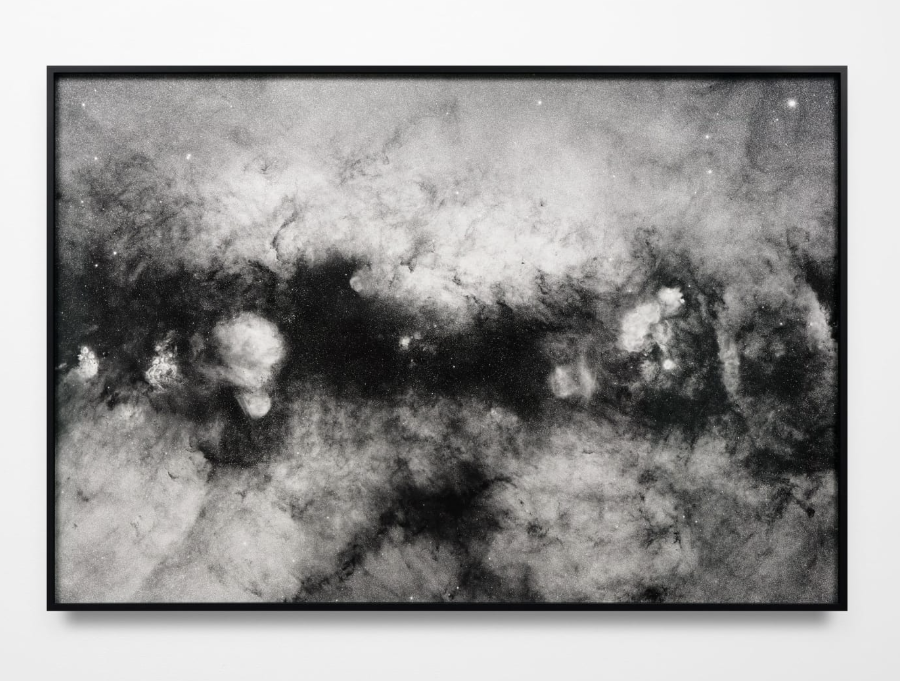1150 25th St /
Altman Siegel
Altman Siegel is delighted to present a selection of work from Trevor Paglen’s new series, Unids, which was recently on view at the Neue Berliner Kunstverein. Continuing his decades-long exploration of the relationship between technology and power, with a particular focus on government-sponsored surveillance, Paglen’s new photographs capture images of the unknown objects which orbit the earth, referred to as “unids” by amateur astronomers. These objects are acknowledged and actively monitored by the U.S. military, though their purpose and origin are officially unknown. They could be innocuous – nothing more than space debris – or they could be objects of covert surveillance attempting to disguise themselves as debris.
There are roughly 350 objects of unknown origin in orbit, some of which are tracked by the U.S. Air Force. The objects which the U.S. Air Force does not publicly track, presumably because they are of classified origins, are sourced and observed by both amateur astronomers and foreign sources. Using the information available from these sources to model the orbits of such “unids,” Paglen can predict where and when in the sky he might find a particular object. Because “unids” tend to be fast moving and very faint, Paglen uses a Rowe-Ackermann Schmidt Astrograph (RASA) astrograph to capture 10,000 seconds worth of data for each “unid” sighting. The resulting images, shot using an infrared filter, highlight the various stelliferous and gaseous regions in the sky which are invisible to our eyes. Stunning in their detail; the hydrogen, sulfur, and oxygen emissions reveal great cosmic clouds, stellar remnants, and galactic structures that recall Gustave Doré’s etchings of The Divine Comedy. Though Paglen’s photographs visualize the appearance of these unknown objects, they leave the questions surrounding their existence open ended: Where did these objects come from? Are they harmless? Or is their orbit part of a more sinister, calculated system of surveillance? In questioning the origins of such “unids,” Paglen continues to parse the invisible power structures embedded into our modern landscape through technology, highlighting concerns regarding surveillance, privacy, and freedom.
